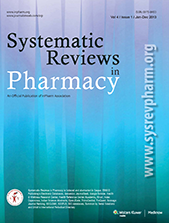Nanofibrils-Current and Future Aspects
Abstract
Deepika B30263*, K. Jyothi Priya30264, M. Bhavana30266 and U. Naga Mohana Kumari30267
This review summarizes the preparation methods of cellulose nanofibrils (CNFs) and focuses on the mechanical treatment of cellulose, the surface modification of fibrillated fibers during pretreatment, the surface modification of nanocellulose and the modification of CNFs and their functional application. In the past five years, research on cellulose nanofibrils has progressed with developments in nanomaterial’s research technology. However, owing to its high energy consumption, high cost and challenging industrial production, the applications of nanocellulose remain limited. In addition, although nanofibrils exhibit strong biocompatibility and barrier and mechanical properties, their high hydrophilicity limits their practical application. Cellulose nanofibrils have mainly focused on the industrial production of CNFs, their pretreatment and functional modification and their compatibility with other biomass materials. In the future, with the rapid development of modern science and technology, the demand for biodegradable biomass materials will continue to increase. Furthermore, bio-based nanomaterials are expected to advance in the direction of functionalization and popularization.






